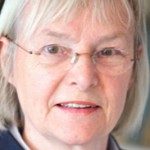Lien vers Pubmed [PMID] – 8625794
Development 1996 Feb; 122(2): 429-37
Newly formed somites or unsegmented paraxial mesoderm (UPM) have been cultured either in isolation or with adjacent structures to investigate the influence of these tissues on myogenic differentiation in mammals. The extent of differentiation was easily and accurately quantified by counting the number of beta-galactosidase-positive cells, since mesodermal tissues had been isolated from transgenic mice that carry the n-lacZ gene under the transcriptional control of a myosin light chain promoter, restricting expression to striated muscle. The results obtained showed that axial structures are necessary to promote differentiation of paraxial mesoderm, in agreement with previous observations. However, it also appeared that the influence of axial structures could be replaced by dorsolateral tissues, adjacent to the paraxial mesoderm. To elucidate which of these tissues exerts this positive effect, we cultured the paraxial mesoderm with a variety of adjacent structures, either adherent to the mesoderm or recombined in vitro. The results of these experiments indicated that the dorsal ectoderm exerts a positive influence on myogenesis but only if left in physical proximity to it. In contrast, lateral mesoderm delays the positive effect of the ectoderm (and has no effect on its own) suggesting that this tissue produces an inhibitory signal. To investigate whether axial structures and dorsal ectoderm induce myogenesis through common or separate pathways, we dissected the medial half of the unsegmented paraxial mesoderm and cultured it with the adjacent neural tube. We also cultured the lateral half of the unsegmented paraxial mesoderm with adjacent ectoderm. The induction of the myogenic regulatory factors myf-5 and MyoD was monitored by double staining of cultured cells with antibodies against MyoD and beta-galactosidase since the tissues were isolated from mouse embryos that carry n-lacZ targeted to the myf-5 gene, so that myf-5 expressing cells could be easily identified by either histochemical or immunocytochemical staining for beta-galactosidase. After 1 day in culture myogenic cells from the medial half expressed myf-5 but not MyoD, while myogenic cells from the lateral half expressed MyoD but not myf-5. By the next day in vitro, however, most myogenic cells expressed both gene products. These data suggest that the neural tube activates myogenesis in the medial half of paraxial mesoderm through a myf-5-dependent pathway, while the dorsal ectoderm activates myogenesis through a MyoD-dependent pathway. The possible developmental significance of these observations is discussed and a model of myogenic determination in mammals is proposed.
